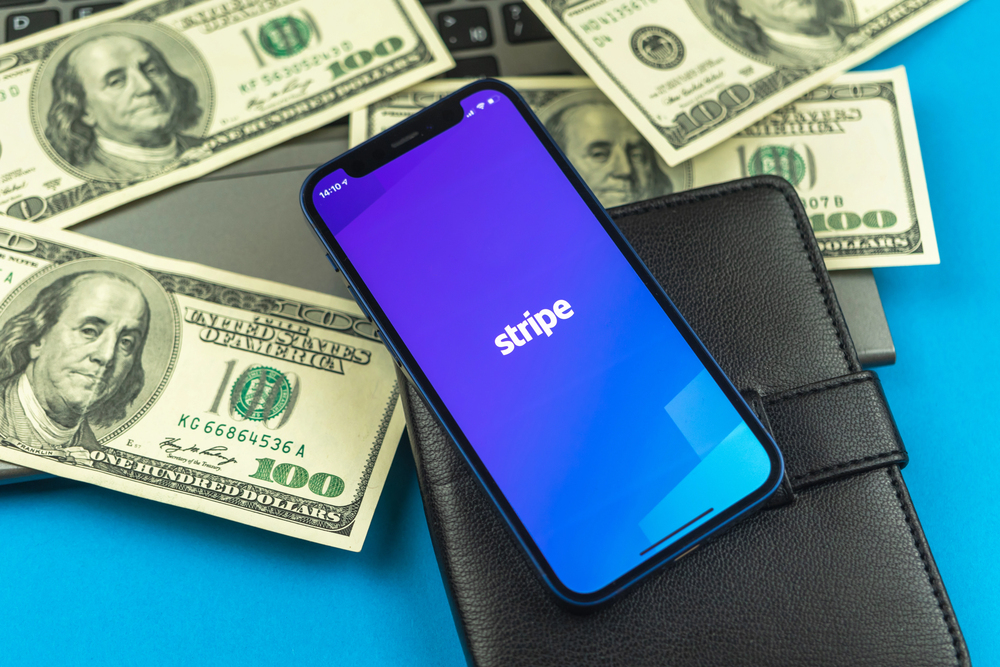
Stripe Fees Increase, Avoid Paying More This Black Friday
Nov 11, 2022 4 minute Read
Black Friday is right around the corner and Stripe, the world’s largest payment service provider, has increased transaction fees for MKE (manual keyed entry) payments.
MKE is used by every category of merchants, sometimes as a backup solution and others as the primary method of payment. By increasing the fee for this type of transaction, businesses are stuck between paying even more money to an already stringent Stripe pricing structure or losing the sale altogether.
Follow our guide below on understanding what manually entered payments are and how you can avoid paying the price this holiday season (and beyond).
Stripe increases MKE fees by 0.5%.
The increase means instead of paying 2.9% + $0.30, you will now pay 3.4% + $0.30.
While a seemingly insignificant percentage increase, think about how much goes to Stripe at the end of the month when you check your Stripe billing statement. 2.9% is on the higher end of the processing fee spectrum (especially considering this is flat rate pricing). Increasing it to 3.4% pushes it into the offshore processing range, which is typically between 3% and 5% depending on your provider.
The additional cost is unnecessary and we believe you shouldn’t have to pay it.
Please note, this does not apply to all payment methods, only MKE via Stripe’s virtual terminal.
The price hike is due to higher fraud rates.
Fraud is always a risk for merchants and customers, alike. Merchants generally see fraud as a chargeback. Customers see it as a stolen card and unrecognized transactions.
Chargebacks occur when a customer disputes a charge they see on their bank account directly with the bank to receive a refund without requesting a refund from you first.
So, why is there suddenly more risk of fraud than yesterday?
There are two things we can think of: interest rates and holiday shopping.
To quote the official Stripe support article, “This price increase reflects the cost of higher fraud rates associated with collecting customer card details by phone or other unencrypted sources.” Because of the recent increase in interest rates, it’s more expensive for Stripe to handle these fraud cases. In order to combat the increased Stripe cost, they will charge customers more (whether that customer suffers from a higher chargeback ratio and has a history of fraudulent transactions or not).
The second reason is holiday shopping. Black Friday, Cyber Monday, and the holiday shopping season, in general, is right around the corner. We’re already seeing pre-Black Friday sales happening. This shopping frenzy directly correlates with increased fraud in Q4. Most businesses won’t see the consequences until January when chargebacks start rolling in. How is Stripe combatting this? By increasing the transaction fee.
Which merchants are affected most by the Stripe processing fee increase?
All types of business are affected, but there are a couple of industries in particular that will end up paying significantly more if they stick to using Stripe as their processor. MOTO merchants (mail order and phone order) use MKE for all transactions, meaning this category will suffer the most.
Manual keyed entry transactions are often used as the backup for in-store purchases. When a chip or magnetic strip isn’t working properly, or the customer doesn’t use a digital wallet, MKE is the go-to solution.
Even online merchants use MKE when customers need to change their payment type without canceling an order or if they have issues with checkout and attempt to make a purchase through customer support. MKE is much more common than most merchants realize.
During the holidays, MOTO transactions increase as customers often call in to secure their orders. Or when online shopping overwhelms the payment gateway, a common solution is to manually enter the payment details.
Understanding the MKE payment process to avoid paying the extra fee.
In order to completely avoid the new 0.5% increase, you need to understand how the payment process works for MKE transactions.
What does MKE mean and when is it used?
Manual keyed entry, usually phrased as manually entered transactions, is when a business owner or associate physically enters the credit card details of a customer.
When you hand over your card to a cashier in person for them to type in the numbers because it doesn’t swipe, that’s MKE. When you speak your credit card details out loud over the phone, that’s MKE.
MKE transactions in Stripe require the merchant to go into their Stripe account dashboard and type in the payment details.
Is every card-not-present transaction a manual key entry transaction?
You’d be right in thinking so, but the answer is no. MKE transactions are CNP transactions, but not all CNP transactions are MKE.
Online payments rely on CNP transactions. At checkout, the customer always types in their credit card details unless they used a pre-saved card. These are technically manual key entry transactions because the customer typed in their details as opposed to swiping their card—but there’s a catch.
MKE is unique to merchants typing in customer card details into a virtual terminal. So when customers enter their details into a secure payment gateway, the transaction is not considered MKE. But it is considered CNP.
What’s the difference between a virtual terminal and a payment gateway?
Payment gateways are what customers interact with at checkout and are required for e-commerce businesses. Virtual terminals are software that allows merchants to process credit card transactions. You don’t need a payment gateway to use a virtual terminal, it’s more of a backend feature that generally comes alongside your PSP.
For example, the Stripe payment gateway is used when customers make a payment after shopping on your site. When merchants log into their Stripe Dashboard, they will see a virtual terminal that allows them to manually enter payment details on behalf of the customer. Both transactions go through Stripe, but the virtual terminal bypasses the security measures implemented by the gateway.
Virtual terminals are not the same as a POS system (point of sale), either. A POS is used for in-person payments and credit card processing where the customer swipes or taps. Your POS may include a virtual terminal within.
Here’s how you can avoid paying the extra fee Stripe charges this holiday shopping season.
The shopping craze is just around the corner. Here’s how you can avoid Stripe’s increased transaction fees and pocket the profits.
Have a Backup Processor and Gateway
If your payment gateway isn’t working, as in an error comes up after the customer attempts to make a payment, notify the customer that something went wrong and refresh the checkout page with a new gateway.
Merchants can have as many processors and gateways as they want. It’s such a good idea to have at least one backup in case your primary payment gateway glitches. This will help you combat declines and errors.
Stripe is convenient, we know. It’s often used by startups and small businesses. But you can use other gateways and processors that accept:
- Apple Pay
- Google Pay
- Debit Cards
- Credit Cards
- American Express
- ACH and Direct Debit
- Wire Transfers
- International Cards
Credit card payments may be the most popular, but it’s not the only type. If you are in an industry like MOTO, then a processor that accepts ACH over-the-phone would be highly beneficial to you.
A backup processor is also a great idea if you sell different types of products, like subscriptions as well as one-time purchase products. You can configure each API to automatically be used for the type of product you want. This also applies to currency conversion and getting the best rate possible for your foreign customers.
Obtain Level 3 Processing
You can save big if you can set up your payment and fulfillment processes to meet the level 3 processing requirement.
It’s not difficult to obtain, but it will take some rearranging and serious organization on your part. Read how to get it here.
Get a Merchant Account
Stripe is not a merchant account nor is it a payment processor. While it’s convenient and has a place in your payments ecosystem, it’s not the be-all solution that you want. The same goes for PayPal and Square.
A real merchant account, one that matches your business model and accepts merchant category, will provide incomparable processing rates and negotiable fees with a real payment processor that backs your business.
Even if you are a MOTO merchant where MKE and CNP fraud is highest, a real merchant account will help you avoid the additional fees and even prevent fraud/chargebacks.
Secure your business for the holidays and avoid Stripe’s fees.
DirectPayNet is a merchant account provider for e-commerce, MOTO, and most other high-risk merchants. Our experts can set you up with a processor that provides heightened fraud protection with no monthly fees and secure payouts as well as a PCI-compliant gateway or card reader.





5 thoughts on “Stripe Fees Increase, Avoid Paying More This Black Friday”